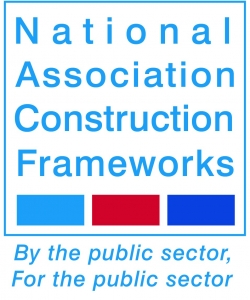Innovating health and safety in construction: A new imperative for public sector projects
By James Wright, Head of SCF (South East)
Construction remains one of the most dangerous industries with the Labour Force Survey finding 400,000 working days were lost in 2023/2024 due to workplace injuries. Yet it’s one of the most vital – especially when it comes to public infrastructure, valued at approximately £17.7 billion in Q4 2024.
With the Construction Leadership Council’s (CLC) launch of its Health, Safety and Wellbeing Strategy, which will aim to deliver better standards across the construction sector, there’s a renewed call for leaders in the industry to innovate. Not only is this vital for ensuring ongoing safety and resilience, but improving health, safety and wellbeing in construction directly supports public sector goals to ensure timely and sustainable delivery of critical assets that service communities nationwide.
This is even more vital following the spending review, which introduced tighter funding scrutiny and emphasised efficient use of resources across projects. Improving health, safety and wellbeing is therefore not only a moral imperative, but also an economic and strategic necessity.
Where innovation can drive impact
With public sector organisations continuing to fund and commission major infrastructure, from hospitals to schools, to transport and energy, there is a growing expectation that projects lead by example in health, safety and wellbeing.
Technology is a critical enabler, helping delivery partners to reduce risk, improve behaviours and embed safety into the fabric of a project. Here’s how leading contractors across Southern Construction Framework are applying innovation in ways that directly support safer, more reliable public sector outcomes.
Data-driven behavioural insights
BAM Construction now uses telematic data from telehandlers to monitor critical behaviours on site. The system generates alerts when seatbelts aren’t used, parking brakes are disengaged, Longitudinal Load Moment Control (LLMC) is overridden, or when machines are operated at speed or with elevated booms. These insights help site teams identify unsafe patterns early, intervene effectively, and reinforce a culture of accountability. For public clients, this means greater assurance that plant is operated responsibly and safely throughout the build.
Removing risk through automation
By replacing high-risk tasks with automation, this enables contractors to drive improved safety outcomes. Kier, for example has used drones to conduct inspections at height, removing the need for operatives to access elevated areas manually. BAM has also introduced robotics to install and manoeuvre heavy plate glass, reducing physical strain and injury risk. These not only protect workers, but also reduce accidents that could delay or disrupt the delivery of public infrastructure.
Immersive training
At the Morgan Sindall SCF project at the University of Hertfordshire, operatives undergo virtual reality training, immersing them in realistic, site-specific scenarios. This improves knowledge retention and risk awareness, far beyond traditional toolbox talks. This is vital for public sector clients, who benefit from enhanced readiness – with better trained workers contributing to safer, more predictable site operations.
Meeting the mental health challenge through digital innovation
Alongside physical safety, mental health is a critical focus for the industry. The rise of digital platforms, mental health apps, and telehealth tools has opened new pathways to support operatives on and off site.
Several SCF contractors now work closely with Lighthouse, a dedicated construction wellbeing charity that offers access to practical resources, self-check-in tools, and early advice through its online platform. These services provide quick and confidential access to support, helping individuals manage symptoms before they escalate. In parallel, mental health apps are being adopted across sites to offer discreet access to CBT-based programmes, in-app therapy, and even crisis escalation channels, where users can be triaged directly to professional support. Willmott Dixon, for example, has developed an e-learning resource called ‘Alone not Lonely’ as part of its All Safe Minds campaign, offering insight and practical advice on overcoming isolation.
Raising the bar on public safety leadership
Health and safety is no longer just a matter for contractors – it’s a shared strategic priority. Under the Public Procurement Act, clients are now responsible for embedding health and safety into procurement, setting clear expectations and holding delivery partners accountable not just for cost, and time, but workforce wellbeing and safer outcomes to ensure timely and efficient delivery of community projects.
While construction has made significant strides in health and safety, it’s through continued innovation and a culture of collaboration and early engagement that we can empower every stakeholder to play their part in delivering safer, smarter projects.
